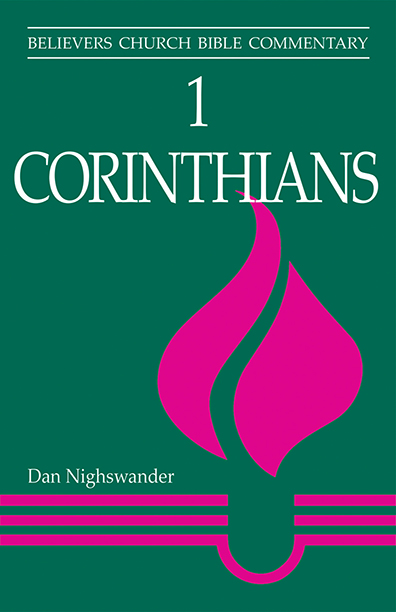Bodies (in 1 Corinthians)
![]() Home A B C D E F G H I J K L M N O P Q R S T U V W X Y Z Abbreviations Glossary
Home A B C D E F G H I J K L M N O P Q R S T U V W X Y Z Abbreviations Glossary
First Corinthians is full of bodies; forty-six of them, to be precise, in thirty-five verses. They all have the same Greek name, sōma, but they mean different things.
Sometimes the body is a physical person, such as these: The body is meant not for fornication (6:13), or The husband does not have authority over his own body, but the wife does (7:4), or I punish my body and enslave it (9:27). Paul also writes about different kinds of bodies in his discussion of the resurrection: heavenly bodies and earthly bodies (15:40), physical and spiritual bodies (15:44).
Other times, the body is a corporate unit, such as the Christian community. For example, You [plural] are the body of Christ and individually members of it (12:27), or Because there is one bread, we who are many are one body, for we all partake of the one bread (10:17).
As we have seen throughout, the concern of this letter is to unify the corporate body. To do that, it is necessary to control the individual bodies. Many of the issues addressed in this letter are about matters of body control, especially sex, eating, and speaking. A sharp distinction between the physical body of a person and the corporate body of society was not imaginable in Paul’s mind nor in the Corinthians’ minds. “In the ancient world, the human body was not like a microcosm; it was a microcosm—a small version of the universe at large” (D. Martin 1995: 16).
According to Dale Martin’s (1995) study The Corinthian Body, all the issues that Paul addresses in 1 Corinthians have to do with bodies, and the division in the assembly (body) that Paul is addressing had to do with two opposing views of the body. These, Martin argues, are characteristic of two socioeconomic “classes”: the “strong” and the “weak.” The strong, the wealthy and educated minority (the not many of 1:26), shared an ideological construction of the body that held that it was necessary to maintain balance in all the body’s constituents. They were not much concerned about boundaries or pollution, since everything was an important aspect of bodily balance. They saw the ethical issues of eating meat sacrificed to idols, prostitution, and sexual desire not as moral absolutes but as a matter of maintaining a healthy balance. They considered hierarchical relationships within the communal body to be natural and necessary for balance (D. Martin 1995: 143, 159–62).
The weak, on the other hand, constituted the majority in Corinth and came primarily from the socially disadvantaged class. In their ideological construction, they saw the body as “a dangerously permeable entity threatened by polluting agents” (D. Martin 1995: xv). These people viewed disease and pollution not as imbalance but as an invasion from the outside by potentially demonic forces. Any deviation from what they deemed natural relationships within the communal body (e.g., in terms of sexuality, spiritual manifestations, or a woman’s self-presentation while prophesying) reflected the presence of evil supernatural powers within the community.
According to Martin (1995), these two competing ideologies of the body lie behind most of the conflicts at Corinth. Martin argues that Paul’s positions on the various subjects addressed in this letter represent conflicts between Paul’s views of the body—both the individual body and the church as the body of Christ—and the view of “the strong.” That does not mean that Paul always takes the side of “the weak”; wherever possible he supports “the strong,” though with some corrective instruction. However, Paul’s understanding of the body does not fit either group’s assumptions. He repeatedly calls them to understand both their physical bodies and their corporate body in the context of what God has done in Christ and the eschatological hope of resurrection.
| —Dan Nighswander |
